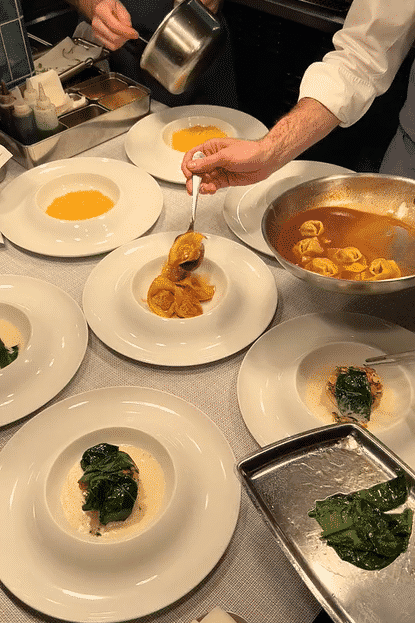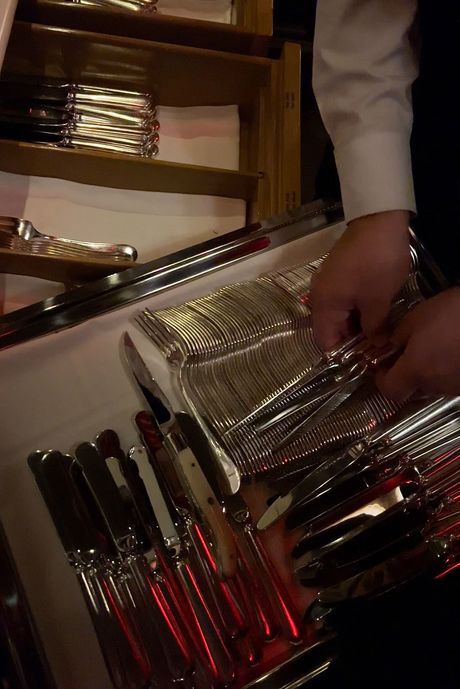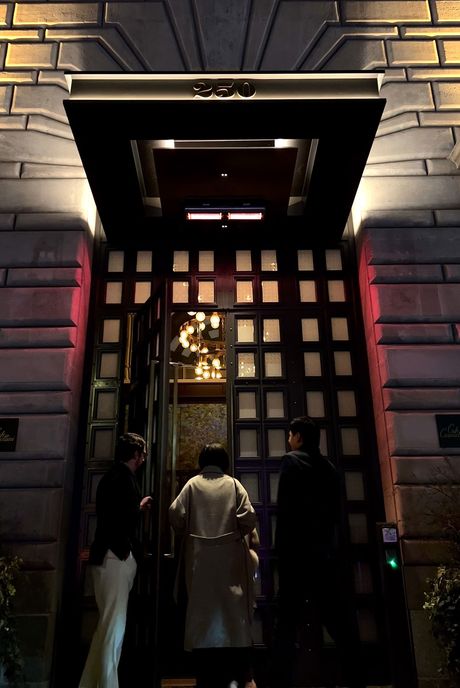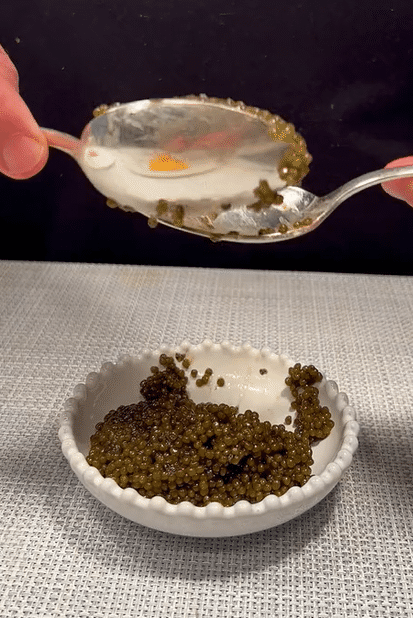Café? If you say so. Andrew Carmellini’s latest — his first restaurant to open, his people say with terrific gravitas, under his own name — is to the usual café as caviar is to chicken eggs. It’s housed in the new five-star Fifth Avenue Hotel, a McKim, Mead & White mansion originally erected as a Gilded Age bank. I have never seen a maître d’ so eagerly leap to hold back a tablecloth lest a scrap of cotton worry my delicate legs. Show up five minutes early to your reservation and you can watch staffers with wireless irons attack every wayward wrinkle.
The room is decorated in high-gilt style: The banquettes are blue velvet, and two Art Nouveau peacocks etched in glass preside over the bar. Tables can be booked on the wraparound mezzanine for those who require more privacy than the canopy of trees down the center of the dining room can provide.
For Carmellini, the restaurant represents a return to form. His early days as a chef in New York were spent at Lespinasse and Café Boulud, which he opened for Daniel Boulud in the ’90s. In the intervening years, with his partners Luke Ostrom and Josh Pickard, he developed a portfolio nearly as capacious as his mentor’s but with a more democratic bent. His Manhattan spots — Locanda Verde, the Dutch, Lafayette, Bar Primi, and Carne Mare — are stalwarts (average age: ten years old) and reliably good for a plate of pasta or a nicely cooked strip steak. With Café Carmellini, the group is placing a bet that fine dining is ready for a resurgence.
If the “Café” in the name strains credulity, “Carmellini” does not. The menu divides its attentions, as the chef long has, between French and Italian styles, and waiters are only too happy to provide peeks into the family story that explain the offerings. The salty, musky strips of lard that drape the shrimp Colonnata are aged in Italian marble, the ancestral Carmellinis’ old-country trade; grapefruit sorbetto for dessert comes with a bottle of dry vermouth, which Carmellini’s grandmother used to splash on her breakfast grapefruit. (Nonna Carmellini sounds fun.) But Locandavores looking for red sauce will be disappointed: There are only three pastas on the menu (if you count a rotating risotto — squash the night I ordered it), and not one of them centers a tomato. An off-menu slab of lasagna was the color of snow even before a white-gloved waiter got to work shaving a white truffle the size of a softball. These are pastas Frenchified, from foie gras–foamed duck-duck-duck tortellini (filling, foie, sauce) to my favorite, cannelloni filled with lobster-scallop-and-shrimp mousse, topped with knuckles of lobster meat and a generous oblong of Golden osetra.




Photos: Hugo Yu.
Photos: Hugo Yu.
You could get used to eating like this, assuming you have the wherewithal for $75 pasta courses. Carmellini is showing off more than you might expect for a man whose other projects include franchising himself with Vornado (on a new Bar Primi), and the results can be wonderful. There are nods to the current trends — for photogenicity, you couldn’t do better than the red-snapper meunière, a vellum-thin sheet of fish dotted with radishes and flowers — but for pure pleasure, the less traveled the path the better. Rabbit cacciatore (roasted loin, braised leg, liver-mousse-filled raviolini) is a world away from the supper-club standard the name conjures. Halibut is served “Billi Bi” style, poached in saffron-mussel sauce, an homage to a cream-of-mussel soup originally served at Maxim’s in Paris that was popularized in America in the ’60s by Craig Claiborne.
By the time the dessert menu arrives, let alone the cart of vintage amari, you may be overwhelmed by the muchness of it all. Grandma Carmellini’s sorbetto, millennial pink and zippily herbal from the vermouth, is a good counterweight. But where tycoon rules apply, leaning in is the better move. The sticky toffee pudding has been sauced with dark rum. Most places, that would be enough. Here, one of your many servers will come by with a pan of more rum and a match to spoon blue flames over the whole, a gift from above.
See All